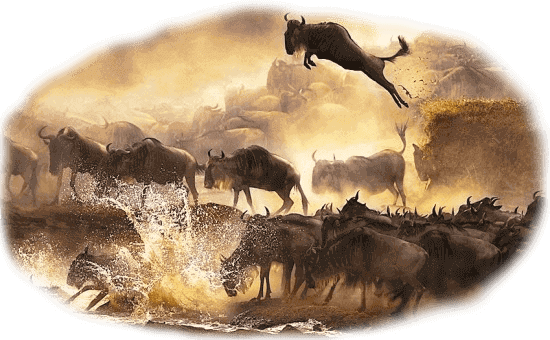 Kenya, a country synonymous with the majestic beauty of the African continent, has long been at the forefront of wildlife conservation, striving to protect its rich biodiversity amidst global environmental challenges. The nation's commitment to preserving its natural heritage is not just a testament to its dedication to environmental stewardship but also to its recognition of the crucial role wildlife plays in sustaining ecological balance and supporting local communities. Below is how directive of Kenya's innovative conservation efforts, highlighting the collaborative endeavors between government agencies, local communities, non-governmental organizations, and international partners. These initiatives range from anti-poaching campaigns and habitat restoration projects to sustainable tourism and community empowerment programs. Together, they illustrate a comprehensive approach to conservation that seeks not only to safeguard Kenya's iconic species such as elephants, rhinos, and lions but also to ensure a sustainable future for the country's natural landscapes. By exploring the successes and challenges of Kenya's conservation strategies, we aim to shed light on the path forward for wildlife protection, not just in Kenya but as a model for conservation efforts worldwide. Eco-tourism in Kenya offers travelers the unique opportunity to explore its rich biodiversity and vibrant cultures while supporting conservation efforts and local communities. Discover the impact of Sustainable Wildlife Conservation Efforts in Kenya, a key initiative preserving the country's rich biodiversity for future generations.
Kenya, a country synonymous with the majestic beauty of the African continent, has long been at the forefront of wildlife conservation, striving to protect its rich biodiversity amidst global environmental challenges. The nation's commitment to preserving its natural heritage is not just a testament to its dedication to environmental stewardship but also to its recognition of the crucial role wildlife plays in sustaining ecological balance and supporting local communities. Below is how directive of Kenya's innovative conservation efforts, highlighting the collaborative endeavors between government agencies, local communities, non-governmental organizations, and international partners. These initiatives range from anti-poaching campaigns and habitat restoration projects to sustainable tourism and community empowerment programs. Together, they illustrate a comprehensive approach to conservation that seeks not only to safeguard Kenya's iconic species such as elephants, rhinos, and lions but also to ensure a sustainable future for the country's natural landscapes. By exploring the successes and challenges of Kenya's conservation strategies, we aim to shed light on the path forward for wildlife protection, not just in Kenya but as a model for conservation efforts worldwide. Eco-tourism in Kenya offers travelers the unique opportunity to explore its rich biodiversity and vibrant cultures while supporting conservation efforts and local communities. Discover the impact of Sustainable Wildlife Conservation Efforts in Kenya, a key initiative preserving the country's rich biodiversity for future generations.
Engaging Communities and Fostering Sustainable Livelihoods
In the heart of wildlife conservation efforts lies a crucial, yet often overlooked, component: the engagement of local communities. Community-based wildlife conservation in Kenya has shown promising results in balancing ecological integrity with local livelihoods. Far from being mere bystanders, these communities play a pivotal role in fostering sustainable livelihoods that are in harmony with the conservation of wildlife. This symbiosis is not just beneficial it's essential for the long-term success of conservation initiatives. The intrinsic link between community well-being and wildlife conservation is evident in various parts of the world, where indigenous knowledge and practices have contributed to the sustainable management of natural resources. By actively involving local communities in conservation efforts, we not only empower them but also tap into invaluable traditional wisdom that has been passed down through generations. This collaborative approach is key to creating conservation strategies that are both effective and culturally sensitive. Engagement strategies vary widely, from community-based natural resource management (CBNRM) programs to eco-tourism initiatives that provide alternative sources of income, reducing the reliance on activities that may harm the environment. For instance, in parts of Africa, community conservancies have transformed the relationship between people and wildlife, turning erstwhile poachers into protectors. By granting communities rights over wildlife management and benefit-sharing, these conservancies have seen remarkable success in both increasing wildlife populations and improving local livelihoods. Moreover, education and awareness campaigns play a crucial role in fostering a culture of conservation. By educating community members about the benefits of wildlife conservation not just for the environment but for their socio-economic development these efforts cultivate a sense of ownership and responsibility towards natural resources. Engaging communities and fostering sustainable livelihoods is not just a complementary aspect of wildlife conservation; it is a cornerstone upon which the future of conservation must be built. By aligning conservation goals with community development, we can ensure a harmonious coexistence between humans and wildlife, paving the way for a sustainable future. By engaging in eco-tourism in Kenya, visitors contribute to the preservation of its natural habitats and endangered species, experiencing the country's beauty responsibly and sustainably. The success of community-based wildlife conservation in Kenya underscores the importance of involving indigenous communities in environmental stewardship.
Wildlife Conservation Strategies | Achieving a Greener Future
Wildlife conservation is pivotal for maintaining biodiversity and ensuring a sustainable future for our planet. Effective strategies encompass a multifaceted approach, addressing both immediate threats and long-term ecological balance. To protect endangered species and habitats, sustainable wildlife management in Kenya focuses on balancing ecological needs with local community benefits. Below are six key strategies integral to achieving a greener future through wildlife conservation.
1. Protected Areas Establishment
The creation of protected areas, such as national parks and wildlife reserves, provides safe havens for endangered species and ecosystems. These sanctuaries are critical for preserving biodiversity, offering a buffer against the encroachment of human activities. By strictly regulating access and resource use within these areas, we can safeguard vital habitats and ensure the survival of countless species.
2. Anti-Poaching Measures
Poaching remains a dire threat to wildlife, driven by illegal trade in animal parts. Implementing stringent anti-poaching measures, including enhanced surveillance, patrolling, and the use of technology such as drones, is essential. Legal frameworks must be strengthened, and penalties for poaching increased to deter illegal activities, ensuring the protection of vulnerable species from exploitation. Through smart conservation strategies in Kenya, local and international stakeholders are collaborating to combat poaching and habitat destruction.
3. Community Involvement and Education
The engagement and education of local communities are vital. By involving communities in conservation efforts, we foster a sense of ownership and responsibility towards the natural environment. Educational programs raise awareness about the importance of wildlife conservation, promoting sustainable practices that benefit both the community and the ecosystem.
4. Habitat Restoration and Connectivity
Habitat loss and fragmentation are major threats to wildlife. Restoration projects aim to rejuvenate degraded areas, while habitat connectivity initiatives seek to link isolated patches, facilitating species migration and genetic exchange. These efforts are crucial for the recovery of endangered species and the maintenance of ecological processes.
5. Climate Change Mitigation
Climate change poses an existential threat to wildlife, altering habitats and endangering species survival. Conservation strategies must include efforts to mitigate climate change, such as reducing greenhouse gas emissions and promoting carbon sequestration through reforestation. Protecting and restoring ecosystems can also enhance resilience to climate impacts, securing a lifeline for many species.
6. Sustainable Use and Ecotourism
Sustainable use policies and ecotourism offer ways to generate economic benefits from wildlife without depleting resources. By implementing practices that ensure the long-term viability of species, communities can derive income from conservation. Ecotourism, in particular, promotes conservation awareness and provides financial means to support conservation projects, creating a win-win scenario for both wildlife and local populations. This are some of the smart conservation strategies in Kenya.
The success of sustainable wildlife management in Kenya demonstrates the importance of integrating conservation efforts with economic development strategies. Achieving a greener future through wildlife conservation requires a comprehensive approach, blending protection, restoration, community engagement, and sustainable utilization. These strategies, working in concert, can pave the way for a more biodiverse and sustainable world. Learn how Sustainable Wildlife Conservation Efforts in Kenya are leading the way in protecting endangered species and promoting eco-tourism.
The Role of Technology in Protecting Kenya's Biodiversity
 In the vast savannas, dense forests, and sprawling ecosystems of Kenya, a silent revolution is unfolding. The battle to protect and preserve the country's rich biodiversity is being fought not only on the ground but also through the innovative use of technology. As the challenges to wildlife conservation evolve, so too do the tools at our disposal, marking a new era in the quest to safeguard Kenya's natural heritage. The role of technology in protecting Kenya's biodiversity is both transformative and multifaceted, offering hope and novel solutions in the face of poaching, habitat loss, and climate change. From drones soaring above the expansive landscapes to monitor wildlife movements and detect poachers, to sophisticated data analytics predicting patterns of illegal activity, technology is at the forefront of conservation efforts. Mobile technology empowers local communities with real-time information, fostering a participatory approach to conservation, while genetic analysis aids in the fight against wildlife trafficking by tracing the origins of confiscated materials. Meanwhile, satellite imaging provides critical insights into changes in land use, deforestation rates, and the impacts of climate variability on ecosystems. This digital arsenal not only enhances the efficiency and effectiveness of conservation strategies but also creates a bridge between traditional knowledge and modern science. By leveraging technology, Kenya is setting a global precedent, demonstrating how innovation can be harnessed to protect biodiversity and ensure the sustainability of natural resources for future generations. The integration of technology into conservation practices signals a hopeful horizon for Kenya's wildlife, showcasing a path forward that balances ecological integrity with technological advancement. Kenya conservation technology trends are revolutionizing the way wildlife is protected and monitored in national parks and reserves.
In the vast savannas, dense forests, and sprawling ecosystems of Kenya, a silent revolution is unfolding. The battle to protect and preserve the country's rich biodiversity is being fought not only on the ground but also through the innovative use of technology. As the challenges to wildlife conservation evolve, so too do the tools at our disposal, marking a new era in the quest to safeguard Kenya's natural heritage. The role of technology in protecting Kenya's biodiversity is both transformative and multifaceted, offering hope and novel solutions in the face of poaching, habitat loss, and climate change. From drones soaring above the expansive landscapes to monitor wildlife movements and detect poachers, to sophisticated data analytics predicting patterns of illegal activity, technology is at the forefront of conservation efforts. Mobile technology empowers local communities with real-time information, fostering a participatory approach to conservation, while genetic analysis aids in the fight against wildlife trafficking by tracing the origins of confiscated materials. Meanwhile, satellite imaging provides critical insights into changes in land use, deforestation rates, and the impacts of climate variability on ecosystems. This digital arsenal not only enhances the efficiency and effectiveness of conservation strategies but also creates a bridge between traditional knowledge and modern science. By leveraging technology, Kenya is setting a global precedent, demonstrating how innovation can be harnessed to protect biodiversity and ensure the sustainability of natural resources for future generations. The integration of technology into conservation practices signals a hopeful horizon for Kenya's wildlife, showcasing a path forward that balances ecological integrity with technological advancement. Kenya conservation technology trends are revolutionizing the way wildlife is protected and monitored in national parks and reserves.
Leveraging GIS and Remote Sensing for Habitat Protection
Geographic Information Systems (GIS) and Remote Sensing are pivotal technologies in the modern era of environmental conservation, especially in the realm of habitat protection. These tools offer a comprehensive approach to analyzing and monitoring ecosystems across the globe, providing critical data that can inform sustainable management practices and conservation strategies. GIS is a framework for gathering, managing, and analyzing data rooted in the science of geography. It integrates various data types, enabling researchers and conservationists to visualize, question, analyze, and interpret data to understand relationships, patterns, and trends. In habitat protection, GIS can be used to map habitats, assess land use changes, and model habitat suitability for different species. This aids in identifying critical areas that require protection, understanding the impacts of human activities on these habitats, and developing strategies for mitigating negative effects. Remote Sensing, on the other hand, involves the acquisition of information about an object or phenomenon without making physical contact with it, typically through satellite imagery or aerial photography. This technology is invaluable for monitoring changes in land cover, vegetation health, and the expansion of urban areas, which are critical factors in habitat degradation. Remote sensing data can be analyzed over time to detect changes in habitat extent and quality, offering timely insights for conservation efforts. Integrating GIS with Remote Sensing data enhances the ability to protect habitats by providing a multi-dimensional view of ecosystems. It allows for the tracking of dynamic changes over large areas and inaccessible regions, making it possible to respond more effectively to threats like deforestation, climate change, and illegal poaching. For instance, conservationists can use these technologies to design protected areas that connect fragmented habitats, ensuring wildlife corridors that support species migration and genetic diversity. The leveraging of GIS and Remote Sensing for habitat protection also facilitates greater collaboration among stakeholders, including government bodies, non-profit organizations, and local communities. By providing accessible and compelling visual representations of data, these technologies help in communicating the importance of conservation efforts and in rallying support for protective measures.
Advancements in Wildlife Monitoring and Anti-Poaching Efforts
GPS Tracking Collars: GPS collars are revolutionizing wildlife monitoring by providing real-time data on the movement patterns of animals such as elephants and rhinos. This technology enables conservationists to track animals in vast areas, enhancing efforts to protect them from poachers and understand their migratory behaviors.
Drone Surveillance: Drones offer a bird's eye view for monitoring wildlife and detecting poaching activities in remote areas. Equipped with high-resolution cameras and night-vision capabilities, drones can cover large swathes of land efficiently, providing critical information to rangers for quick response to illegal activities.
Artificial Intelligence (AI) and Machine Learning (ML): AI and ML are being used to analyze camera trap images and sensor data to identify species, count animal populations, and predict poaching threats. These technologies streamline data analysis, helping conservationists to make informed decisions more quickly and accurately.
Anti-Poaching Robots: In some protected areas, robots are deployed to patrol and monitor for suspicious activities. These robots can navigate difficult terrains and are equipped with sensors and cameras to record and report back to conservation teams, acting as a deterrent to poachers.
Smart Parks: The concept of 'Smart Parks' integrates various technologies like sensors, cameras, and drones into a unified system. This system provides comprehensive real-time surveillance of parks, enabling better management of wildlife and quicker reaction to threats like poaching or encroachment.
Community Engagement Apps: Mobile applications are empowering local communities to participate in conservation efforts. These apps facilitate the reporting of poaching incidents, wildlife sightitigs, and habitat threats directly to authorities, fostering a collaborative approach to wildlife protection.
Genetic Analysis for Forensics: Advances in genetic analysis are enhancing anti-poaching efforts by enabling the identification of poached animal products. DNA testing can trace the origin of ivory and other animal parts, helping to dismantle trafficking networks and providing evidence for prosecution in wildlife crime cases. Researchers and conservationists are keenly observing Kenya conservation technology trends to implement innovative solutions for environmental preservation.
Technology plays a pivotal role in safeguarding Kenya's rich biodiversity. Through innovative solutions such as wildlife tracking systems, drones for monitoring, and AI for data analysis, conservation efforts have become more efficient and effective. These technologies not only aid in the fight against poaching and habitat destruction but also provide invaluable insights for sustainable management and conservation strategies. As Kenya continues to embrace and develop these technological tools, the future of its biodiversity looks promising. By leveraging technology, Kenya can ensure the preservation of its unique ecosystems for generations to come, maintaining its status as a global treasure trove of biodiversity.






